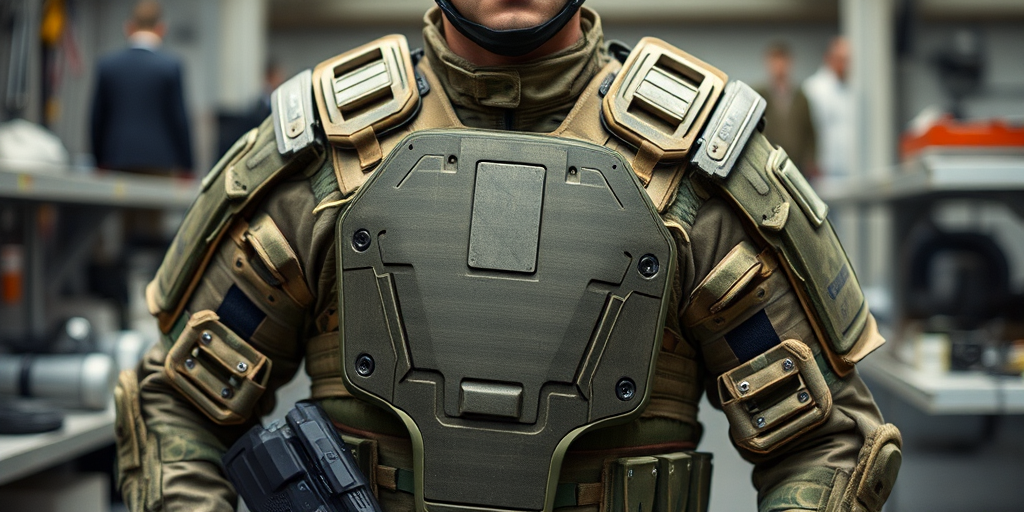Have you ever wondered if body armor could evolve beyond traditional Kevlar? As innovations surge forward, groundbreaking materials and sensor-enabled systems are redefining personal defense. In our deep dive, I explore how modern breakthroughs—ranging from bio-inspired composites to next-level polymers—address historical weaknesses while offering unmatched mobility and durability. This exploration not only challenges your perceptions about ballistic protection but also provides actionable insights for tactical enthusiasts eager to stay ahead of the curve in cutting-edge body armor technology.
Bulletproof Innovation: Revolutionary Materials in Body Armor Tech

Modern combat scenarios demand next‐gen vest engineering that transcends the limits of traditional Kevlar-based armor. Emerging threats and evolving battlefield dynamics necessitate ultra‐light protection innovation to deliver enhanced mobility without sacrificing ballistic resistance. As conventional materials reach their performance ceiling, researchers are compelled to explore innovative polymer advancements and alternative composites that promise superior energy dispersion, reduced weight, and increased flexibility. These efforts are critical to overcoming the inherent trade-offs associated with legacy armor designs.
Recent studies have focused on biomimetic approaches and advanced material formulations to achieve breakthrough protection. Engineers are investigating bio-inspired composites mimicking natural defense mechanisms and integrating sophisticated non-Newtonian shear-thickening fluids to absorb high-impact forces. Concurrently, research into ultra-high molecular fibers and advanced ceramics aims to develop armor that is both thinner and more resilient. This multi-disciplinary approach targets not only improved impact absorption but also enhanced operational durability.
- Bio-inspired composites
- Advanced ceramics
- Ultrastrong polymers
- Nanotech-enhanced fibers
- Non-Newtonian fluid applications
The integration of these novel materials is poised to transform military-grade protective equipment. By leveraging next‐gen vest engineering and ultra‐light protection innovation, modern body armor will offer unprecedented flexibility and performance in high-threat environments. Advanced design coupled with rigorous material testing ensures that soldiers benefit from armor systems capable of adapting to dynamic battlefield conditions. Ultimately, these cutting-edge breakthroughs herald a new era in ballistic protection, reinforcing safety and tactical effectiveness through streamlined, high-performance materials engineered for the challenges of tomorrow.
Bulletproof Innovation: Smart Integration and Sensor-Enabled Body Armor Tech

Modern body armor is evolving through the fusion of traditional ballistic protection and cutting-edge digital sensing technologies. Today’s designs embed smart circuits and biometric alert systems within protective gear, enabling real-time analysis of battlefield conditions. This smart integration transforms body armor from a static shield into an adaptive system that continually assesses and responds to environmental threats, aligning traditional defense capabilities with modern IoT advancements.
Embedded sensor-enabled solutions work by continuously capturing critical data and translating it into actionable insights.
- Real-time monitoring
- Threat level assessment
- Automatic damage reporting
These features allow the armor to detect impact forces, issue biometric alerts, and transmit live operational data to command centers. This integration of digital sensors within the protection framework enhances situational awareness and facilitates a faster, more informed response to emerging threats. Engineers are leveraging these digital capabilities to refine sensor calibration and optimize system performance under varied combat conditions.
The advanced sensor integration not only improves individual safety by providing immediate feedback on potential trauma but also contributes significantly to military operational effectiveness. Enhanced real-time data collection, precise threat analysis, and automated reporting systems enable commanders and field operatives to make critical decisions swiftly. This smart, adaptive approach redefines tactical readiness and sets the stage for future innovations in dynamic battlefield protection.
Final Words
In the action, we explored the evolution of body armor from traditional Kevlar methods to advanced protective solutions.
Detailed insights into revolutionary materials, design breakthroughs, and smart sensor integration painted a comprehensive picture of progress.
The article emphasized the significance of overcoming historical challenges to drive forward Bulletproof Innovation: What’s New in Body Armor Tech.
Modern trends and future applications promise enhanced combat readiness and tactical performance, pushing the envelope of protective technology on the battlefield.
FAQ
What is the latest breakthrough in body armor technology?
A: The latest breakthrough in body armor technology combines bio-inspired materials like lobster exoskeleton analogues with non-Newtonian fluids, creating lighter and more resilient protection than traditional Kevlar vests.
What materials are replacing traditional Kevlar in modern body armor?
A: Advanced ceramics, ultra-high molecular fibers, and nanotech-enhanced composites are emerging as Kevlar alternatives, offering improved protection while reducing overall weight and thickness.
How does smart body armor technology work?
A: Smart body armor integrates digital sensors and biometric systems for real-time threat assessment, impact trauma monitoring, and automatic damage reporting, enhancing battlefield awareness and response capabilities.
What makes modern body armor more effective than previous generations?
A: Modern body armor utilizes modular systems, segmented construction, and optimized load distribution to enhance mobility while maintaining superior ballistic protection and ergonomic comfort.
What are the key innovations in military-grade body armor?
A: Military-grade innovations include self-repairing polymers, hybrid shielding concepts, and enhanced impact trauma reduction technologies, all designed to maximize protection while minimizing weight.
How long does modern body armor last?
A: Modern body armor typically maintains peak effectiveness for five years, though emerging materials and self-repairing technologies aim to extend operational lifespan significantly.
What advantages do bio-inspired materials offer in body armor?
A: Bio-inspired materials, such as mushroom-based chitin and exoskeleton analogues, provide enhanced flexibility and impact resistance while maintaining lighter weight compared to traditional materials.
